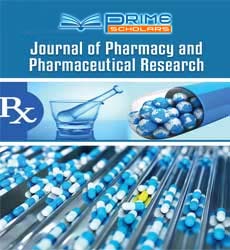Short Communication - (2022) Volume 6, Issue 2
Short Note on Pharmaceutical Biologic Clinical Substance and Its Classification
Joseph Crystal*
1Department of Pharmaceutical, University of Melbourne, Australia
*Correspondence:
Joseph Crystal, Department of Pharmaceutical, University of Melbourne,
Australia,
Email:
Received: 29-Mar-2022
Editor assigned: 31-Mar-2022
Reviewed: 14-Apr-2022
Revised: 19-Apr-2022
Published:
26-Apr-2022, DOI: 10.21767/ipipr.6.2.10
Introduction
A biopharmaceutical, otherwise known as a biologic clinical substance
(al), or biologic, is any chemical substance that is produced,
extracted from, or incorporated into natural sources. It is not the
same as a complete set of drugs, including vaccines, whole blood,
blood components, allergens, large cells, quality treatments, tissues,
useful recombinant proteins, and living drugs used in cell
therapy. Biology can be made of sugar, proteins, nucleic acids, or a
complex combination of these substances, or it can be living cells
or tissues. They (either precursors or components) are cut off from
living organisms human, animal, plant, infectious, or microbial.
They can be used in both human and biological medicine.
Description
The terms that include biopharmaceuticals vary between circles
and objects, with different terms referring to different treatment
sets within the general biopharmaceutical category [1]. A number
of regulatory agencies use the names of regenerative substances
or organic matter to express clearly in macromolecularly designed
materials such as protein based and nucleic corrosive drugs, identified
in such substances as blood, blood components, or antibodies,
usually derived directly from biological source. Biopharmaceutics
are drugs that work with biopharmaceuticals. Biopharmacology is
part of a pharmacology reviewing biopharmaceuticals. Specialty
tranquilizes, a new drug system, expensive drugs that are usually
biologics [2]. The European Medicines Agency uses the term “progressed
treatment therapeutic items” (ATMPs) in medicines used
by humans “in the light of properties, cells, or tissue engineering”,
which include high-quality therapies, physical therapy, muscle
building drugs, and in-medicine settings. EMA, the term continuous
treatment refers specifically to ATMPs, although that term
is not clear except in those specific cases [3]. The basis of quality and the science of molecular biology, for example, are often at the
forefront of biomedicine testing and biomedical testing, and may
be used to treat a variety of diseases for which no different therapies
are accessible. Perhaps the oldest forms of biologics are removed
from a variety of creatures, and especially different people.
Important biologics include: Whole blood and other blood components,
organ transplants and tissue transfers, Stem-cell therapy,
antibodies for insusceptibility aloof (e.g., infection infection),
human pregnancy cells, human breast milk, and Feca microbiota.
Some recently removed biologics in organisms, such as insulin, are
currently commonly produced by DNA recombinant [4]. Biologics
as an instructional class in this small concept greatly affects many
areas of clinical practice, especially rheumatology and oncology,
yet moreover cardiology, dermatology, gastroenterology, neuroscience
science, and more. In a large part of these fields, biologics
have added important decisions for the treatment of many diseases,
including some that have not been achieved with effective
treatment, and others where existing therapies were not already
available.
Conclusion
However, the biological treatment approach also raised complex
management issues (see below), as well as serious economic concerns
on the grounds that the cost of biologic treatment was much
higher than traditional (pharmaceutical) medicine. This flexibility
has been especially effective as many natural remedies are used to
treat chronic ailments, such as rheumatoid joint pain or incendiary
gut disease, or to treat any permanent or irreversible growth spurt
throughout life. The cost of treatment with a standard monoclonal
neutralizer for common symptoms is relatively high for each
patient each year. More severe patients receiving biologic treatment
for diseases such as rheumatoid arthritis, psoriatic arthritis,
or ankylosing spondylitis are at increased risk of serious infections, heart attacks, and threats.
Acknowledgment
The author is grateful to the journal editor and the anonymous
reviewers for their helpful comments and suggestions.
Conflict of Interest
The author declared no potential conflicts of interest for the research,
authorship, and/or publication of this article.
REFERENCES
- Walsh Gary (2018) Biopharmaceutical benchmarks 2018. Nat Biotechnol. 36 (12): 1136–1145.
[Crossref] [Google Scholar] [PubMed]
- Ryan Michael P, Walsh Gary (2012) Veterinary-based biopharmaceuticals. Trends Biotechnol. 30 (12): 615–620.
[Crossref] [Google Scholar] [PubMed]
- Calo-Fernández B, Martínez-Hurtado JL (2012) Biosimilars: Company strategies to capture value from the biologics market. Pharmaceuticals. 5 (12): 1393–408.
[Crossref] [Google Scholar] [PubMed]
- Dove A (2000) Milking the genome for profit. Nat Biotechnol. 18 (10): 1045–8.
[Crossref] [Google Scholar] [PubMed]
Citation: Joseph C (2022) Short Note on Pharmaceutical Biologic Clinical Substance and Its Classification. J Pharm Pharm Res Vol.6 No.2:10
Copyright: © Joseph C. This is an open-access article distributed under the terms of the Creative Commons Attribution License,
which permits unrestricted use, distribution, and reproduction in any medium, provided the original author and source are
credited

